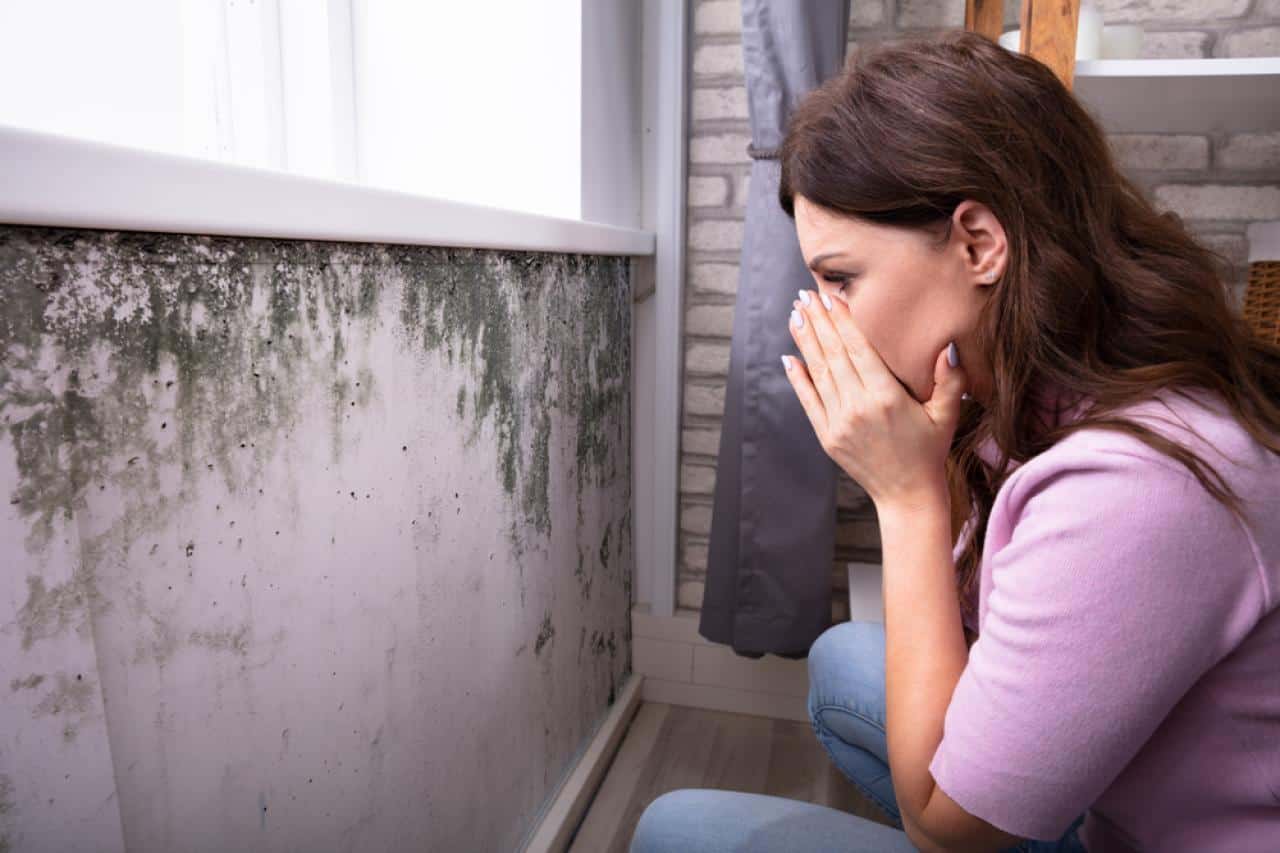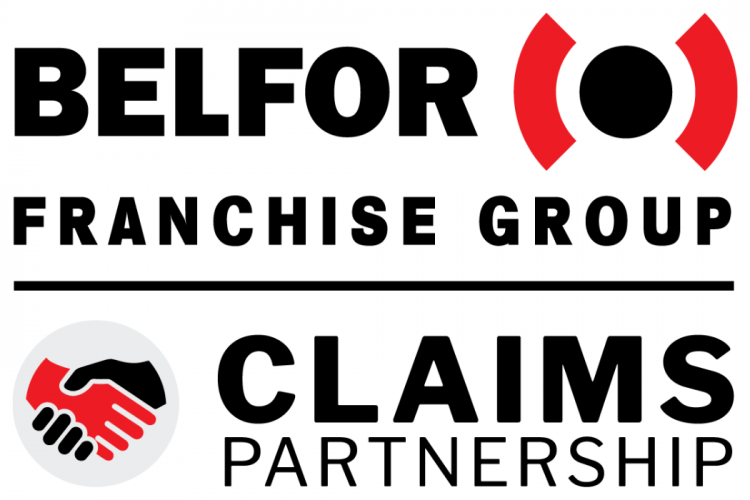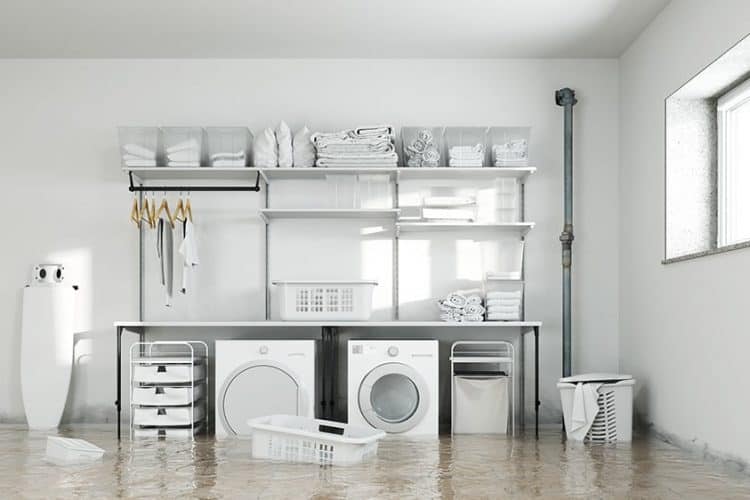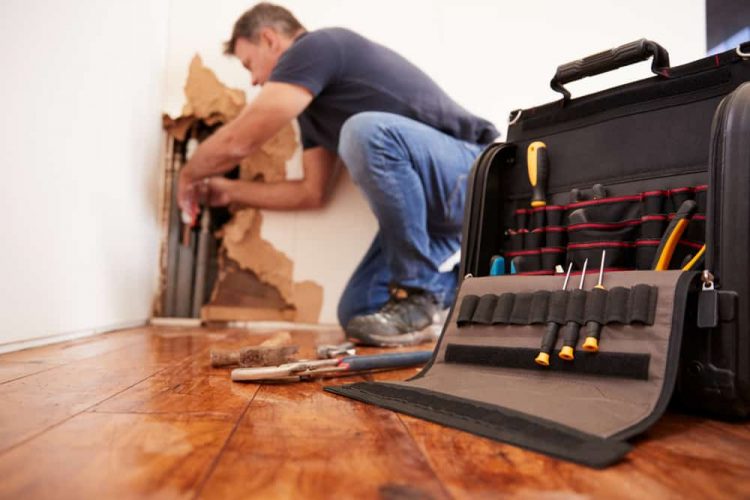During any discussion about mold, it’s important to note that “black mold” is not an official name or term used by professionals in the remediation or public health and safety fields. That being said, when people talk about “black mold” growing in buildings and the heightened concerns surrounding it, they are typically referring to the stachybotrys chartarum species of mold.
According to the CDC, stachybotrys chartarum, is a greenish-black mold. It favors fiberboard, paper, gypsum board, and other materials with high cellulose content. Growth occurs when there’s excess moisture from water damage, water leaks, condensation, water infiltration, or flooding.

Constant moisture is required for mold growth. In a home, moisture can be caused by high humidity levels (over 60%), poorly ventilated rooms, condensation on the walls or previous water damage situations. Thorough cleaning and removal of the black mold are imperative to contain the problem.
One additional consideration: Black mold often presents as green in color, so you may not be aware that you have a black mold problem. If you’re uncertain or concerned about the exact type of mold you have, contact a professional restoration company to assist.
Health impacts of black mold
Health experts have differing opinions on the impact of black mold on your health. Stachybotrys chartarum is usually thought of as the type of mold that causes the most health issues. Experts generally agree that mold causes problems in people who are allergic, who have asthma or who are exposed for a prolonged period of time. Common symptoms of mold exposure include coughing, postnasal drip or nasal congestion, sneezing, dry and scaly skin and itchiness in the eyes, nose or throat.
Black mold often doesn’t become visible until it has been established for nearly three weeks or more, most often being noticed by a mildew-like odor. Black mold needs to be removed in its entirety so as not to contribute to health issues, currently or in the future.
The challenges with removing black mold
When addressing any kind of mold, when you disturb the spores, they can spread to other areas. If the spores spread into your HVAC system, they can lodge in other areas of your home. Even regular air filtration systems may not capture the mold spores.
Black mold removal from wood
Removing black mold from wood is a more difficult task due to how well wood absorbs water and how long it retains that moisture, creating an ideal environment for mold growth. One of the biggest issues is that the integrity of the wood and other materials could be compromised due to the length of time the materials have been wet. If you experience persistent mold, even in a small area, you should use a professional to remove black mold effectively.
When to call a professional service
The challenge with black mold is that you don’t always know how much of a problem you’re dealing with in your home. Black mold removal can often involve more than the eye can see to ensure your home is free of mold. Consider these situations:
- Mold can form inside your walls before it shows up on drywall or other surfaces. What you think is a musty issue due to the smell could be a black mold problem.If you suspect mold is growing, contact a mold remediation company to check it out.
- Mold spores can move about your home and that includes getting into your HVAC system. If there’s a possibility that might have happened in your home, you’ll need a professional service to clean your HVAC system and capture any mold spores that might be lodged there.
- If the mold issue has resulted after a significant water damage event, whether caused by a burst pipe or weather-related issue, there may still be wet or damp materials in hidden or inaccessible areas. Building materials that haven’t been completely driedare a perfect host for hidden mold growth–especially if the water damage event involved contaminated water. You must get all the mold, and that isn’t always a straightforward task to do yourself.
1-800-WATER DAMAGE mold removal
The mold remediation specialists at 1-800 WATER DAMAGE use advanced technology and specialized methods to stop mold growth and minimize the likelihood of recurring issues. Here is our process when called to investigate a homeowner or commercial black mold removal situation:
- Overview. Inspecting your property for mold and determining the extent of the damage.
- Plan. Developing a customized plan for mold remediation.
- Containment. Properly containing the impacted area to prevent cross-contamination.
- Removal. Removing mold damage and thoroughly cleaning the structure.
- Prevention. Taking preventative measures to limit the likelihood of future mold growth.
Our specialists are fully trained and equipped to handle all aspects of mold removal and remediation. We are always pursuing the latest techniques and education to ensure the safest practices for the benefit of our customers.
Contact us for more information on how we can address mold issues in your home or commercial property.



